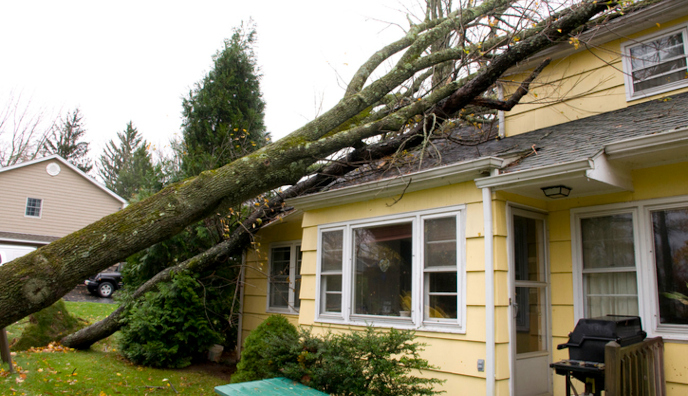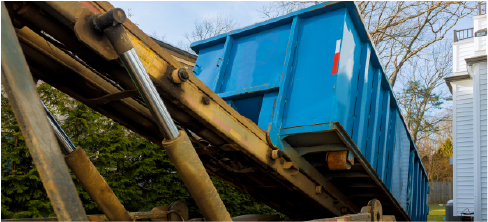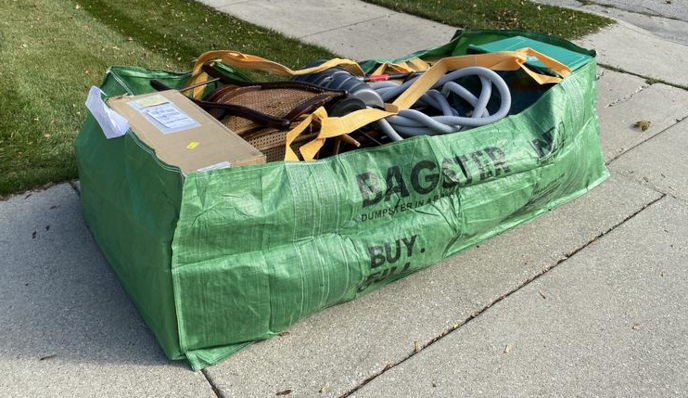
Updated September 21, 2023
As time keeps moving forward, it's becoming increasingly evident how crucial it is for all of us to make strides towards a more sustainable, eco-friendly lifestyle.
Our planet and future generations literally depend on it.
Making small changes in your day-to-day lifestyle can end up making a huge impact on your carbon footprint, not to mention the added money-saving benefits of consuming less energy.
Many green upgrades are eligible for state and federal rebates, which helps you recoup the often costlier upfront expenses associated with buying eco-friendly products.
We want to help you make that change, so we strung together a list of 42 ways to implement more earth-friendly practices into your everyday life.
Find junk removal companies that recycle in your area
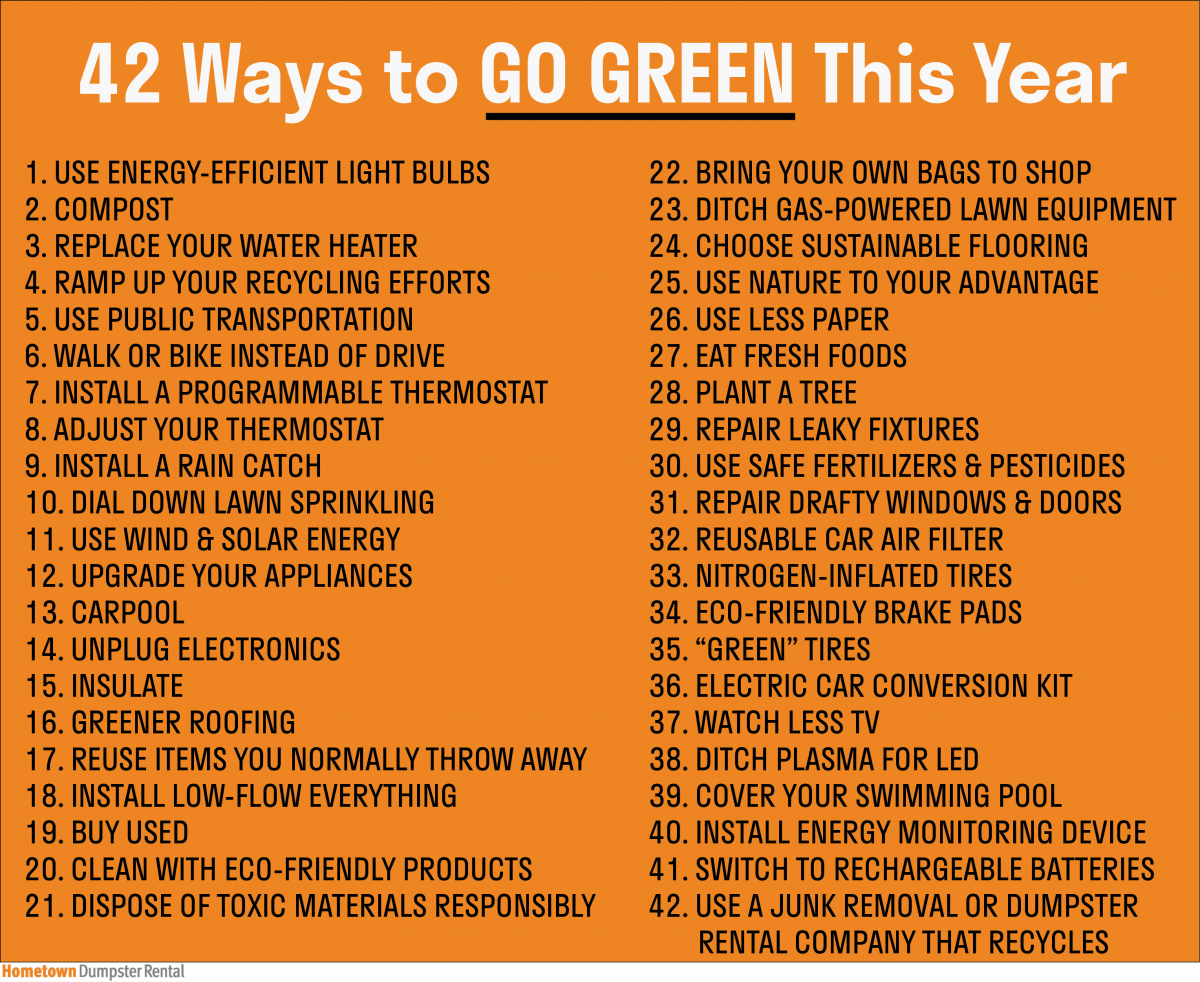
1. Use Energy-Efficient Light Bulbs
Compact fluorescent light (CFL) bulbs last nearly 10x longer than traditional incandescent bulbs and save on energy costs over time (see below).
Better yet, switching to LED bulbs in your house is more durable and energy-efficient, and typically lasts more than 5x longer than a CFL bulb.
| LED | CFL | Incandescent | |
| Light Bulb Projected Lifespan | 50,000 Hours | 10,000 hours | 1,200 Hours |
| Watts Per Bulb (Equivalent 60 Watts) | 10 | 14 | 60 |
| Cost Per Bulb | $35.95 | $3.95 | $1.25 |
| KWh of Electricity Used Over 50,000 Hours | 500 | 700 | 3,000 |
| Cost of Electricity (@ 0.10 per KWh) | $50 | $70 | $300 |
| Bulbs Needed for 50k Hours of Use | 1 | 5 | 42 |
| Equivalent 50k Hours Bulb Expense | $35.95 | $19.75 | $52.50 |
| Total Cost for 50k Hours | $85.75 | $89.75 | $352.50 |
| Energy savings over 50,000 hours, assuming 25 bulbs per household: |
| Total Cost for 25 Bulbs | $2,143.75 | $2,243.75 | $8,812.50 |
| Savings to Household by Switching From Incandescents | $6,668.75 | $6,568.75 | 0 |
2. Compost

The EPA estimates that 20-30% of municipal waste consists of food scraps and yard debris.
Instead of throwing it away, compost it.
Although the science behind how composting works is pretty complicated, the basics of composting are easy.
Mix “brown” materials (sticks, leaves, dirt) with “green” materials (fruit/veggie scraps, tea bags, coffee), keep it moist, mix it at least once weekly, and in several weeks you’ll have a fresh batch of organic compost ready for fertilizing plants, flowers, and vegetables.
Learn more:
3. Replace Your Water Heater
Water heaters are notorious energy hogs.
In fact, the American Council for an Energy-Efficient Economy (ACEEE) says only heating and cooling systems trump water heaters for most energy consumption in the average home.
When it’s time to replace the water heater, keep these 3 tips in mind:
- Tankless water heaters are not the most efficient option.
- Stick with the power source (usually gas or electric) that you currently have to eliminate potentially costly retrofits.
- ENERGY STAR certified water heaters are always a good bet. Pay attention to the Energy Factor (EF); the higher the number, the better. Electric water heaters will have an EF of 2.0 or higher while gas models will be 0.67 or higher.
The following chart compares the energy usage and costs of different types of water heaters.
| Water Heater Type | Efficiency | Installed Cost | Yearly Energy Cost | Life (Years) | Total Cost (Over 13 Years) |
| Conventional Gas Storage | 0.60 | $850 | $350 | 13 | $5,394 |
| High-Efficiency Gas Storage | 0.65 | $1,025 | $323 | 13 | $5,220 |
| Condensing Gas Storage | 0.86 | $2,000 | $244 | 13 | $5,170 |
| Conventional Oil-Fired Storage | 0.55 | $1,400 | $654 | 8 | $11,299 |
| Minimum Efficiency Electric Storage | 0.90 | $750 | $463 | 13 | $6,769 |
| High-Efficiency Electric Storage | 0.95 | $820 | $439 | 13 | $6,528 |
| Demand Gas (No Pilot) 5 | 0.82 | $1,600 | $256 | 13 | $4,925 |
| Electric Heat Pump Water Heater | 2.20 | $1,660 | $190 | 13 | $4,125 |
| Solar With Electric Back-Up | 1.20 | $4,800 | $175 | 13 | $7,072 |
If your water heater still has life left in it, you can update your current water heater by making it more efficient in the following ways:
- Wrap it in a water heater insulating jacket (available at home improvement stores).
- Wrap insulation around the exposed hot water pipes.
- Turn down the water heater temperature to at least 30 degrees F. Reducing the tank temperature by less than 30 degrees won’t lead to any substantial energy savings.
- Use cold water to wash clothes and reduce water usage throughout the house.
4. Ramp Up Your Recycling
The availability of curbside recycling services continues to grow nationwide, and the same is true for recycling drop-off locations.
Not only is recycling one of the greenest things you can do, but it offers many other benefits:
- Lowers your taxes (it’s cheaper for most cities/towns to recycle compared to landfilling)
- Reduces greenhouse gas emissions and improves air quality
- Creates jobs and boosts the economy
- Saves money by downsizing your curbside trash container to a smaller, less expensive one
5. Use Public Transportation
Buses, trains, cable cars, etc. – it’s available in every municipality, yet many people neglect public transportation (PT).
About 60% of vehicle emissions in the U.S. come from cars and light trucks.
That’s 3x more than buses, freight trucks, and trains combined.
A person who drives 20 miles roundtrip to work each day could reduce his or her carbon emission footprint by 4,800 pounds per year by switching to public transportation.
Other benefits of PT include reduced gasoline consumption, less traffic congestion, and it’s cheaper than owning a car when you factor in insurance, fuel, maintenance, etc.
6. Walk or Bike Instead of Driving
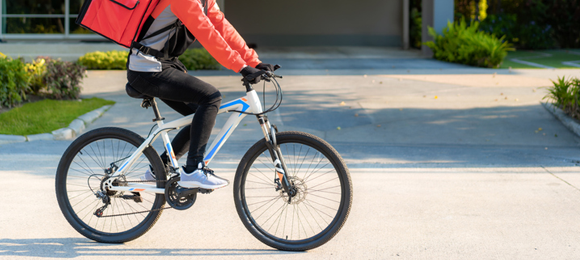
Don’t like taking the bus or train?
Strap on your walking shoes or hop on your bike for a greener way to commute.
About 50% of Americans live within 5 miles of their workplace.
If you fall into this category, walking or cycling to work is definitely a viable option.
A 10-mile roundtrip to and from work burns about 124 gallons of gasoline per year in the average midsize car.
That’s equivalent to 1.3 tons of CO2 emissions.
The cost of that fuel would total about $500 per year (at $4/gallon) and would put extra wear and tear on your vehicle.
Cycling or walking eliminates these harmful CO2 emissions and saves you money on gas, not to mention the benefit to your mental and physical health.
7. Install a Programmable Thermostat
Boost energy efficiency in your home by installing a programmable thermostat.
This little gadget is easy to install and helps reduce energy usage during times of the day when you don’t need it.
A basic programmable thermostat will set you back $20-$30, while a more advanced Wi-Fi-enabled “smart” thermostat costs $50-$200 on average.
However, these thermostats end up paying for themselves.
The initial cost of purchasing a programmable thermostat is offset a few different ways:
- Rebates offered by the state you live in (not all states participate): Look up your zip code
- Rebates offered by your power company
- Reduces heating and cooling costs by $180 per year in a typical single-family home
If you have a heat pump, you should go with a programmable thermostat specifically designed for use in buildings with heat pumps to ensure proper efficiency.
8. Adjust Your Thermostat
If you don't have $50 for a new programmable thermostat, you can still reduce the energy usage in your home or business by turning the temperature down in the winter and turning it up in the summer.
Here’s the general rule to maximize efficiency:
Winter
- Set the thermostat to 68 degrees while you’re awake and at home
- Dial it back 10-15 degrees while you sleep or when you’re away
Summer
- Set the thermostat to 78 degrees while you’re awake and at home
- Turn it off at night or when you're away
- Close your curtains (preferably blackout ones) when you leave to block the sun from heating the inside of the home or building
Contrary to what some may think, your heating and cooling systems do not work harder or consume more energy by adjusting the thermostat temperature throughout the day.
In fact, the opposite is true.
The lower the interior temperature in the winter, the slower the heat loss.
The same is true for the summer–the hotter the inside of the house, the slower the flow of heat comes into your house.
9. Install a Rain Catch
Rain catchers are an eco-friendly way to irrigate your lawn and garden by catching rainwater and storing it until you're ready to use it.
You can purchase a rain catch and barrel system online or from a home improvement store, or you can make one yourself.
All you need is at least one large barrel (e.g., 55-gallon drum), piping (e.g., PVC pipes and elbows), drain (e.g., sillcock), and something to catch the rain (e.g., gutter system or large tarp).
10. Dial Down Lawn Sprinkling
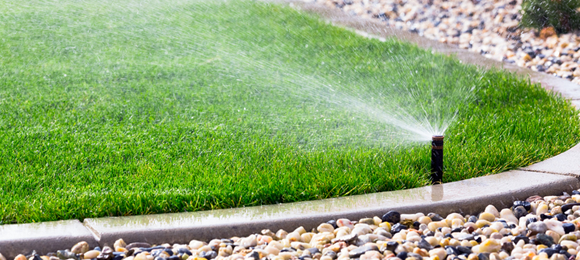
Cut back on water usage by letting the rain handle the lawn sprinkling.
Here are some tips to maintaining a beautiful, green lawn while using less water:
- Water early in the morning to minimize evaporation and to allow for maximum penetration into the soil.
- Keep the grass slightly taller than normal to make the turf more drought tolerant.
- Overseed your lawn with drought-tolerant grass seed designed to sip and hold water.
- Install underground sprinkling and ensure each spray head is in good working order and that the spray pattern is on the grass instead of the driveway or sidewalk.
11. Wind & Solar
This isn’t the most inexpensive way to go green, but it is one of the most impactful.
Wind and solar power systems have come a long way in terms of improving efficiency and dropping in price.
The cost of solar has dropped 99% between 1997 and 2013, so renewable energy is becoming a more viable and popular option for homeowners and small businesses.
Wind Options
- Entry-Level Options: Residential wind turbines are compact and designed for quiet operation. Prices start at $150 for a very basic model that produces little energy. You’re better off spending $300-$500 for a better quality entry-level wind turbine. In this price range, assuming an average annual wind speed of 12 mph, you can generate enough electricity to power a small cabin, RV, or trickle charge a home battery bank.
- Whole-Home Options: The average house in the U.S. uses about 10,800 kWh per year. To power a home using this much energy, you’d need a wind turbine measuring up to 25 ft in diameter. This obviously isn’t a viable option for many people because of HOA rules, local laws, and lack of space. However, a smaller turbine can help offset some of the costs of powering your home.
A wind turbine should always be positioned at least 30 ft above obstructions, such as trees or buildings.
Solar Options
Solar panels are the most energy-efficient option out there.
There are also solar shingles on the market which are the same size and shape of a traditional asphalt shingle but have the added solar technology built-in.
This may be a good option the next time you replace your roof.
What’s nice about solar shingles is that you don’t have to do your entire roof; you can just add them to the parts of the roof that receive the most sun.
TIP: Use the U.S. Department of Energy (DOE) Energy Potential Map to see if solar is right for your location.
Read more:
- Best Dumpster Sizes for Shingle Roof Replacements
- Guide to Renting a Dumpster for Roofing Shingles
- How to Estimate Shingle Weight and Save on the Cost of Roof Disposal
Hybrid System
A hybrid system is the best option if you’re looking for a whole-home renewable energy solution by using both wind and solar technology to power your home or building.
The cost of a hybrid system will typically range between $20,000 and $50,000, but much of that cost is offset by state and federal renewable energy rebates and incentives.
The installation company will determine the best combination of wind and solar to meet your energy needs.
There are two installation options:
- Grid-connected: Remaining 'on the grid' is the cheaper option since you don’t need a battery bank. However, if the power goes out on the grid, you lose power as well. On the plus side, if you generate more power than you use, the power company actually pays YOU, which is a more than welcome change of pace.
- Off-grid: You can cut ties with the power company for good by setting up a battery bank on site. This usually consists of a series of deep-cycle batteries which store the energy you capture from the sun and wind. The benefit of an off-grid system is that when the power goes out in your neighborhood, it won’t affect you.
12. Upgrade Appliances
Old appliances are about as efficient as Indy cars are on fuel (about 1.92 mpg in case you wondered).
Replace your old appliances with new ENERGY STAR certified models and enjoy immediate energy savings.
Of course, be sure to dispose of your old appliances the “green” way to make this a truly eco-friendly transaction.
Here are eco-friendly appliance disposal options:
- Find a local recycler to pick it up. Visit Earth911 to find a recycler.
- Sell it or give it away for free on Facebook Marketplace or Craigslist to keep it out of the landfill.
- Hire a junk removal company that will donate or recycle appliances and electronics on your behalf.
Contact a junk removal company that recycles near me
13. Carpool
If everyone carpooled with just one other person, it would save the nation 33 million gallons of gas each year.
Additionally, cutting just 25 miles of driving from your weekly itinerary would reduce your carbon footprint by 1,500 lbs of CO2.
If your company doesn’t already offer a carpool option, arrange one yourself by asking friends and coworkers.
You could also look into a company like Rideshare, which is a 501(c)(3) nonprofit organization that helps integrate carpool services nationwide.
14. Unplug Electronics
Electronics in standby mode and phone/laptop chargers left plugged into the wall when not in use continue to use electricity – a phenomenon referred to as “vampire energy.”
About 10% of your annual energy bill can be blamed on vampire energy, an estimated $3 billion per year total in America.
Some of the worst offenders include plasma TVs, computers, and video game consoles in standby mode, which collectively add up to about $220 per year in electricity costs for the average household.
Stop vampire energy by…
- Using power strips
- Unplugging cellphone chargers
- Unplugging electronic devices and appliances you don’t use daily
Have a look at the infographic below to see how much energy and money you waste each year to vampires sucking your blood electricity.
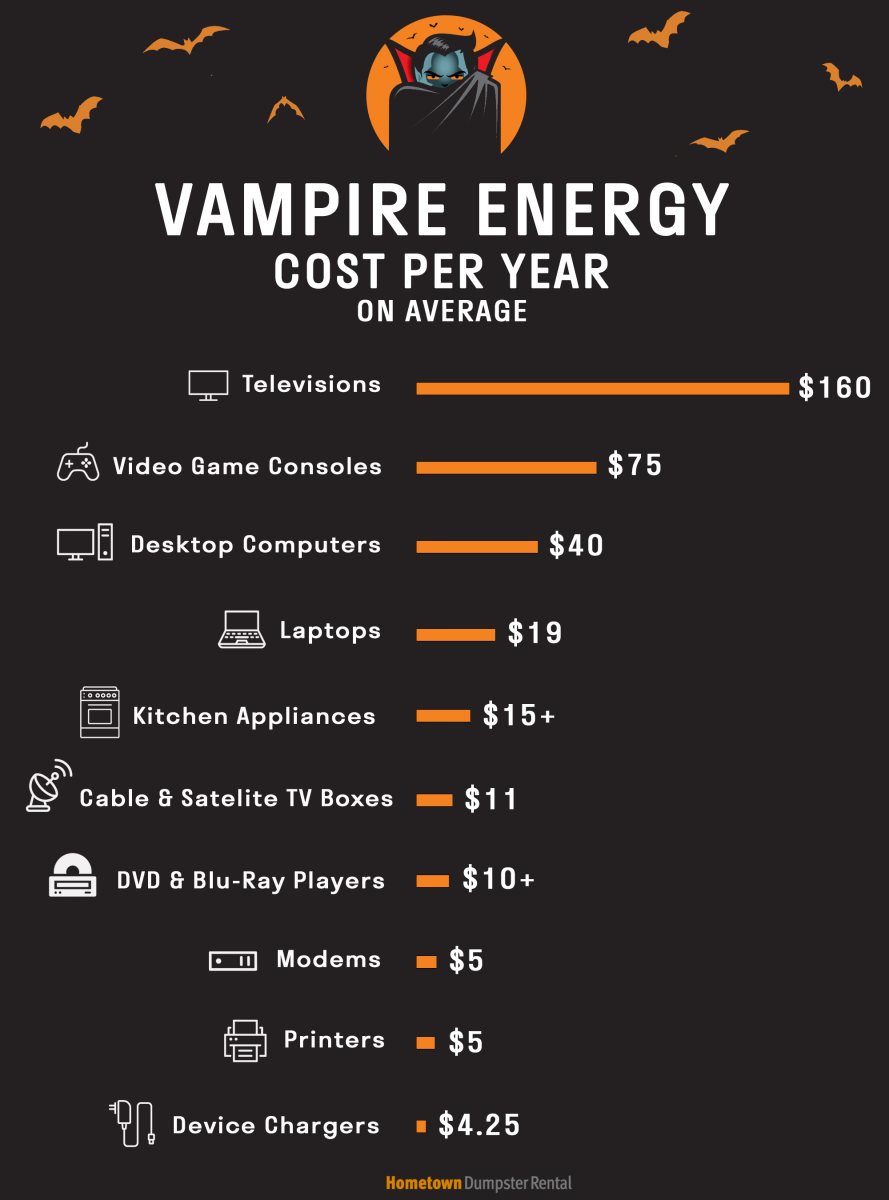
15. Insulate
Considering up to 70% of your home’s energy usage comes from heating and cooling, it’s a substantial waste to let valuable heat or A/C trickle out of your house due to poor insulation.
Adding insulation can reduce heating and cooling costs by around 20%.
To give you an idea of how much energy insulation saves each year in the U.S., it’s more than CFLs, Energy Star appliances, and Energy Star windows combined.
How to do it:
1. Choose the right type of insulation:
- Batts and rolls (blankets) are ideal for do-it-yourself installations. They are made of fiberglass, wool, plastic, or natural fibers.
- Foam board is mounted inside or outside of walls and is ideal for new construction. It’s particularly useful for insulating concrete and concrete blocks.
- Loose-fill or blown-in insulation is best for unfinished attics, inside finished walls, and other hard-to-reach locations. This should be done by a professional.
- Sprayed foam is a better option than loose-fill/blow-in insulation due to its higher R-Value, but it does cost more.
2. Install it:
Install the insulation according to the manufacturer’s instructions.
It’s probably worth having a professional take a look at the condition of your home’s insulation.
In the end, having a professional do the job will pay off with lower heating and cooling bills.
3. Seal up other nooks and crannies:
Areas like windows, doorways, electrical outlets, and outdoor faucets are notorious for letting in cool air in the winter and warm air during the summer.
Most of the time you can seal these areas using caulk or expanding foam for larger gaps.
Learn more:
- 5 Tips for Construction Debris Disposal
- Renting Construction Dumpsters: A DIY Guide to Construction Debris Removal
- Concrete Demolition & Removal: Everything Homeowners Need to Know
Find a dumpster rental company in your hometown
16. Greener Roofing
If it’s time to replace or repair your roof, consider a greener alternative to standard asphalt shingles.
Several green roofing options include:
- Shingles featuring reflective pigments – come in virtually any color
- White “cool” roofing (there’s some debate over the effectiveness of cool roof coating products on the market)
- Vegetative “green” roofing; turn your roof into a garden
- Solar PV panels or solar shingles
- Choose metal roofing – expected lifespan of at least 4x longer than shingles
17. Reuse Stuff You Normally Throw Away

You just need to use your imagination and think outside the box when it comes to reusing and upcycling waste.
There are tons of other examples out there, but here are a few ways you can reuse items you normally throw away:
- Plastic grocery bags are great as wastebasket trash bags or doggy waste bags
- Egg cartons, milk jugs, paper towel rolls, soup cans, etc. make great supplies for crafting with children
- Paper has two sides – use them both before you
throw it outrecycle - Old t-shirts are useful as cleaning rags
- Reuse boxes to ship gifts or items you sell online rather than using brand new boxes
Find more ways to recycle:
18. Install Low-Flow Everything
Installing low-flow toilets, faucets, and showers will help reduce your annual water usage.
Plus, the cost of replacing your current water hog is typically offset within a year when you factor in your water savings.
REBATES: Most cities offer some sort of rebate for purchasing low-flow products. Some municipalities even pay you back the entire purchase price of the product, making this one of the most cost-effective ways to go green.
Continue reading:
- 4 Tips You Should Know Before Starting Your Bathroom Remodel
- Debris Disposal Options for a Bathroom Remodeling Project
Contact an interior demolition contractor in your area
19. Buy Used
Go green by avoiding virgin-material-made products whenever possible.
There are so many avenues nowadays for buying used instead of new.
Here are a few:
- Clothing and household items: Goodwill, Salvation Army, eBay, Craigslist, Facebook Marketplace, garage sales, secondhand stores, etc.
- Building materials: Habitat for Humanity ReStores, Facebook Marketplace
- Used, fuel-efficient cars: Car dealerships, Craigslist, Facebook Marketplace
20. Clean With Eco-Friendly Products
You can buy environmentally friendly cleaning products or make your own for pennies on the dollar.
Here are some easy DIY homemade cleaning product recipes that will help eliminate chemicals and save you some money at the grocery store:
- Glass cleaner: Add ¼ cup white vinegar, ¼ cup rubbing alcohol, 1 tablespoon cornstarch, and 2 cups warm water to a spray bottle.
- Shower cleaner: Mix 1 cup white vinegar, 15 drops of tea tree oil, and 2 cups water in a spray bottle to keep the shower clean and bacteria-free.
- Soap Scum Blaster: Mix 1 cup white vinegar with 1 tablespoon cornstarch and microwave for 2 minutes. Pour in 2 tablespoons of dish soap and pour into a spray bottle. Use on bathroom countertops and showers for tough soap scum.
21. Dispose of Toxic Materials Responsibly
Household hazardous waste (HHW) has no place in our landfills.
It can leach into area waterways, pollute our air, and negatively affects area wildlife.
Most cities offer an annual or biannual HHW collection event where you can bring things like paint, chemicals, solvents, cleaners, scrap tires, batteries, used motor oil, and light bulbs.
Check with your city or county to find out when these events are held.
Your trash hauler may also accept HHW upon request.
Not all do, but it’s worth looking into.
Read more:
- What Junk Removal Companies Will and Won't Take
- What Can I Put in a Dumpster?: A Quick Guide to What's Allowed in Roll-off Containers
22. BYOB (Bring Your Own Bags) to the Grocery Store

8 states have passed bans on using plastic bags in grocery stores, with other states in talks of following suit.
However, Americans still use about 100 billion plastic bags each year, which require 12 million barrels of oil to manufacture.
To say that plastic grocery bags take a long time to decompose is a massive understatement, seeing as it takes roughly 500 years for a single bag to decompose in a landfill.
The inks used to print on these bags also contain toxic chemicals that wreak havoc on our environment.
Sure, you could choose paper bags instead of plastic, but an even more responsible way to shop is to BYOB.
23. Ditch the Gas-Powered Lawn Equipment
For some, using their gas-powered lawn equipment isn't just a chore, but a coveted hobby.
But, the fact is that gas-powered lawn equipment pollutes the air and ground.
A single lawn mower emits 106 lbs of greenhouse gases per season.
Fuel spillage when refilling your lawn and garden equipment is also not something to be taken lightly.
In California alone, 17 million gallons of gas are spilled each year.
Not only is this unhealthy for the environment, but it isn’t at all helpful for breaking our dependence on foreign oil.
You can help be a part of the solution by switching to electric, solar, or manually powered alternatives.
MONEY-SAVING TIP: Some cities offer mower-exchange programs for anyone willing to swap out their gas guzzler for a new electric model. Just do a search online for “lawnmower exchange in [your city or county]” to see if you have one in your area.
24. Choose Sustainable Flooring
Common sustainable flooring varieties include reclaimed hardwood, bamboo, cork, natural fiber carpets, amongst others.
Quality, hardwood flooring is great for homes with allergy or asthma sufferers, it’s easy to clean, and the lifespan is 25-100 years.
TIP: Don’t use cork flooring in a bathroom as it absorbs water easily.
Continue reading:
- Disposal Options for Flooring Removal Projects
- Should I Handle Floor Removal Myself?
- Interior Demolition Cost Breakdown for Appliance, Ceiling, Floor, and Wall Removal
Find a dumpster rental for renovation debris near me
25. Use Nature to Your Advantage
Take advantage of what the great outdoors offers in terms of natural shading, radiant heat from the sun, and the cooling power of wind.
Try these three tips:
- Get Shady: Strategically plant a shade tree to significantly reduce the cost of cooling your home in the summer. Position it so that it blocks the sun from coming into your house during the afternoon hours. Don’t make it an evergreen tree, though, because it may hinder tip #2.
- Free Heat: During the winter, open up your drapes and shade to allow the sun to heat your home during the daytime hours. If you get a good amount of sunshine radiating through your windows, it can boost the temperature in your home by 5 to 10 degrees F.
- Natural A/C: Open those windows in the summer to let “nature’s fan” cool your home. Good airflow through your home will help boost the quality of the air inside your home and reduce the need to crank up the A/C.
Nature can help reduce the need for heating and cooling, and that’s a great thing for the environment and your wallet.
26. Use Less Paper
In today’s digital age, there's no valid excuse for wasting excess paper.
In 2019 alone, 78 million tons of paper were produced in the United States.
Sure, paper production has been on the decline since 2000, and paper recycling is relatively high at 68%, but we still have plenty of room for improvement.
Use less paper by stepping into the 21st century and going digital.
This includes, but certainly is not limited to:
- Making lists on your tablet or smartphone instead of paper (e.g., shopping lists, to-do’s, reminders)
- Display photos digitally rather than printing them out, or be very picky about the ones you print out
- Opt out of receiving junk mail from unsolicited sources
- Don’t print out maps, directions, recipes, or other pages accessible from a computer/tablet/phone
- Purchase recycled paper instead of virgin-sourced paper products
27. Eat Fresh Foods to Reduce Food Packaging Waste
Fresh foods typically aren't bound by plastic packaging, which means less waste.
Containers and packaging make up 23% of waste in landfills, much of which is food-related.
Stick to fresh fruits, veggies, meats from the butcher/deli, and products contained in recyclable packaging.
You’ll be surprised how much less waste you’ll be putting curbside each week.
Not only will this help the environment, but it's much healthier for your nutrition as well.
28. Plant a Tree
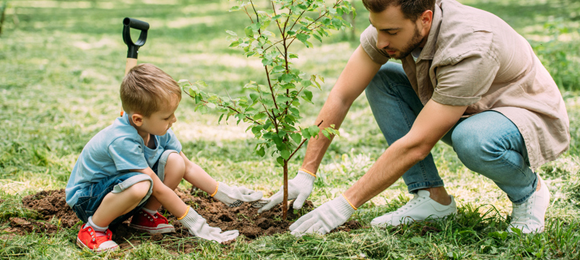
Planting trees offers several benefits:
- Removes about 10 lbs of CO2 from the air each year
- Helps reduce the heat island effect by shading roofs, roads, and other ground surfaces
- Traps as much as 75% of dust in the air
- Produces the cooling effect of 10 room-size A/C units running for 20 hours a day, all due to evaporation
This is one of the quickest and easiest ways to do your part at home, work, or school.
Volunteer with an organization like TreePeople to plant and care for trees in a community near you.
29. Repair Leaky Fixtures
A leaky faucet wastes more water than you may think.
One gallon of water equals 15,140 drips.
A fast-drip leak – say one drip per second – wastes 5.71 gallons of water per day, while a slow drip likely wastes a gallon or more.
It’s easy to replace faucets, leaky water heater drains, and bathroom fixtures.
If you’ve never done it before, just do a quick search on YouTube and you’ll find plenty of tutorials to walk you through it.
30. Use Eco-Friendly Fertilizers and Pesticides
There are plenty of eco-friendly versions of pesticides and lawn fertilizers on the market to choose from, so swapping out the chemicals for all-natural alternatives is a simple way to go green.
Eco-Friendly Fertilizers: Homemade compost is the best option here. If you don’t make your own compost, you can purchase compost at a local landscaping facility or go with any number of organic, all-natural fertilizers found at any landscaping or home improvement store.
Green Pesticides: If at all possible, avoid pesticides altogether by setting sticky traps, killing insects by hand, and by prevention. A good way to prevent insects is to avoid watering lawns and gardens at night, keeping your grass short and making sure not to over-water.
Homemade Potions: There are quite a few homemade concoctions out there aimed at repelling insects, killing weeds, and helping your lawn and garden thrive without using chemicals. Examples include soap spray for killing insects, garlic spray for aphids and other insects, or boiling hot water for killing sidewalk/driveway weeds.
Key Tips:
- Some products are labeled “organic” but aren’t truly so. If it contains bio-solids, it’s not organic.
- Add plants to your lawn and garden that attract the “good” bugs that then kill the “bad bugs,” including alyssum, yarrow, fennel, and dill. Let the animal kingdom do the dirty work for you!
- All-natural botanical pesticides include rotenone, pyrethrum, neem, and sabadilla.
- Different plants do better with certain organic fertilizers, so be sure to use multiple fertilizers if necessary.
- Collaring or putting a border around plants is sometimes a good enough solution to keep insects away.
31. Repair Drafty Windows and Doors

Repairing drafty windows and doors are simple fixes that will greatly improve the efficiency of your heating and cooling systems.
About 10-25% of heat escapes from a home’s doors and windows.
One way to seal up cracks around windows and drafty doors is by using caulk.
Replacing the weather stripping around doors will improve the seal between the door and the frame.
These fixes cost less than $20 and will easily pay for themselves in terms of energy savings.
For larger cracks, use expanding foam to seal it up.
Be sure to use caution when using expanding foam, as it can damage windows if you use too much.
32. Reusable Car Air Filter
Go green when hitting the road, especially if you do a lot of driving.
Instead of replacing your air filter once or twice a year, switch to a reusable air filter.
You can clean these filters and put them right back into your airbox.
It reduces waste and improves your horsepower and fuel efficiency.
33. Nitrogen-Inflated Tires
Inflating your tires with nitrogen instead of regular air helps improve fuel efficiency and it holds pressure better than air.
There is one caveat to consider, however.
Access to nitrogen is limited in some areas, and it usually costs more to fill your tires with it.
Just checking your tire pressure every couple of weeks and filling up with air as needed is nearly as effective at maximizing fuel efficiency compared to going with nitrogen.
That said, if you can find a local auto shop (e.g., Costco) that offers free nitrogen inflation, it’s worth making the switch.
34. Eco-Friendly Brake Pads
Bosch introduced a new line of copper-free ceramic brake pads that are safer for the environment.
The copper that’s in traditional brake pads washes off into lakes and rivers, harming the local wildlife in the process.
35. Green Tires
Low-rolling resistance tires improve fuel efficiency by reducing the amount of resistance between your tires and the road.
This accounts for about 5-15% of your vehicle’s fuel economy, so you can get quite a big boost in fuel efficiency by going with a low-rolling-resistance tire.
All major tire manufacturers offer these greener tire alternatives.
36. Electric Conversion Kit
This upgrade is far from inexpensive – typically costing $3,500 to $10,000 – but is perfect for anyone out there looking to dominate the road with the ultimate green machine.
These electric car conversion kits hit the market in 2008, and they work by replacing the dirty gas-powered engine with a clean, 100% electric-driven motor.
37. Watch Less TV
The average American stares at a screen – TV, tablet, and smartphone – for more than seven hours per day.
That number is, in some cases, much higher for people strapped to a computer all day.
Not including actual work you do on your computer or phone, turn off your electronic screens for an extra hour or two each day.
Your energy savings will slowly add up over time, and who knows, you might actually discover that you prefer the new ways you find yourself spending your free time.
38. Ditch Plasma for LED
Speaking of TV watching, Plasmas are the energy hogs of the flat screen world.
Next time you replace your TV, consider an LED model.
LED TVs are a type of LCD TV that utilizes energy-efficient LEDs to light the screen.
A quality 50-inch LED TV typically costs less than $10 per year to power (assuming 5 hours of use per day), while a plasma TV of the same size may cost 3-4x that amount.
39. Cover Your Swimming Pool
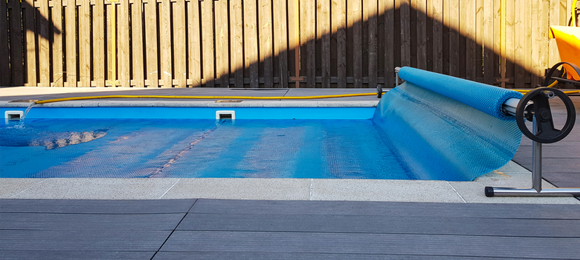
It’s amazing how much energy you can save by using an inexpensive solar cover on your pool.
According to Energy.gov, a pool cover can reduce energy costs associated with heating a pool by as much as 70%.
You can go a step further and ditch the heating unit altogether and just use the pool cover for all your heating needs.
If your swimming pool gets a lot of direct sun, the pool cover alone can boost the water temp by 15 degrees or more.
EXAMPLE: Heating an average-sized pool to 80 degrees in Chicago during the summer months using a heat pump costs about $810 in energy costs. However, this figure is reduced to $105 when a cover is placed on the pool when not in use.
Learn more:
- Should I Get Rid of My Pool?
- The Homeowner's Guide to Swimming Pool Demolition and Removal
- Swimming Pool Removal FAQs: Quick Answers to Common Questions
Reach out to pool removal contractors near you
40. Install an Energy Monitoring Device
The only way to truly find out where energy is being wasted in your home or business is to install an energy monitoring system.
These devices track energy usage throughout your home or building so you can see exactly which appliances and electronic devices are guzzling the most power.
It’s realistically possible to reduce your monthly energy expenses by 15% to as much as 40% by using an energy monitoring device.
Prices vary significantly from as little as $25 for a single outlet model to $200 or more for a whole-home energy monitoring device.
41. Switch to Rechargeable Batteries
Recyclable batteries cost more than single-use batteries, but the gap is closing.
Today, the availability of rechargeable batteries is far beyond what it was just a decade ago, and the pricing is more affordable now, too
Here are some of the benefits of using rechargeable batteries:
- The production of rechargeable batteries consumes 23x less non-renewable natural resources compared to single-use batteries.
- Rechargeables have 30x less impact on air pollution, 28x less impact on global warming, and 12x less impact on water pollution.
- You can recharge modern rechargeable batteries thousands of times, where in the past most, types could only be recharged hundreds of times at the most.
Even rechargeable batteries die eventually, so it's important that you do not throw them in the trashcan when they do.
Rechargeable batteries – including lithium-ion (Li-Ion), nickel-cadmium (Ni-Cd), and nickel-metal hydride (Ni-MH) – should never end up in landfills.
But recycling rechargeable batteries is easy.
Call2Recycle is a nonprofit company dedicated to ensuring these batteries are recycled rather than landfilled.
42. Use a Junk Removal or Dumpster Rental Company That Recycles
When it comes to cleaning out an estate or rental, it's always best practice to recycle or donate as much as possible.
Hiring a junk removal company that recycles and donates on your behalf is easily the most efficient way to clean out rooms and garages, to whole homes and offices.
They'll do all the heavy lifting for you, so you don't have to lift a finger.
If you'd rather do the clearing out yourself, renting a dumpster is a great way to get rid of unwanted items, especially if the dumpster rental company sorts and recycles as much trash as possible.
Hometown makes it easy to find locally-owned service providers and request as many free quotes as you'd like.
We recommend getting at least 3 different quotes to ensure you're not only getting the best price, but the best customer service.
In Conclusion...
There are so many other ways to go green, but hopefully, these tips will help give you a good start.
A more sustainable future is something we can all benefit from, and it all starts with educating each other about the benefits of preserving the environment in our day-to-day lives.
Get free junk removal or dumpster rental quotes in my area
Keep reading:
